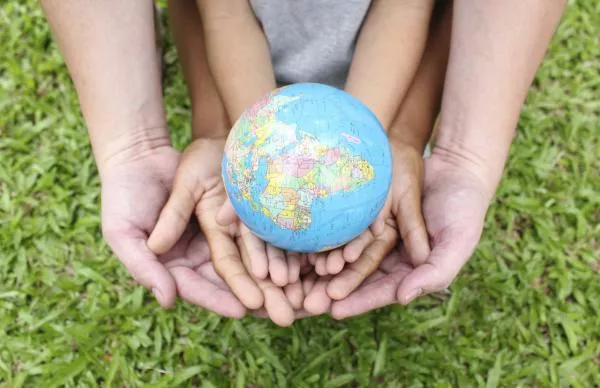
Instinctively when we think of the term "sustainable" we imagine something that can be conserved or sustained. In fact, this is one of its official definitions according to the Royal Spanish Academy (RAE). However, there is a second meaning that refers to the durability of resources, which is one of the bases of the so-called “sustainable development”. What exactly? Due to the great importance it currently has, at Ecologista Verde we bring you closer to this concept by explaining everything about it. sustainable development, its definition and examples.
What is sustainable development
It is a concept that emerged for the first time in 1987 in the publication of the Brundtland Report, which created an alert about the negative consequences that were being generated in the environment due to the economic development and globalization. Sustainable development refers to development that has the ability to meet the needs of the current generation through the consumption of natural resources without compromising their availability for future generations.
For example, felling trees can be considered a sustainable activity as long as their repopulation is assured. On the contrary, the consumption of oil is not currently an activity linked to the sustainable development, since we cannot replace it relatively immediately for future generations, which is the case with much of human activities as they are developed today.

Sustainable development vs. sustainability
Although they may be very similar terms, they should not be confused. The sustainable development seeks to achieve sustainability or sustainabilityTherefore, this constitutes an objective of this type of development. Thus, this development aims to achieve an improvement in the environment and the quality of life of people without endangering the livelihood for the survival of future generations and the planet itself.
The sustainability in ecology It is known as the process by which in biological systems species are in balance with the resources of the environment they inhabit.
Sustainable development goals
The Sustainable development goals are included in the 2030 Agenda, approved by the United Nations. This document includes a series of measures through which to guarantee objectives such as:
- Eliminate poverty and hunger.
- Guarantee a healthy life and the well-being of people.
- Promote quality education and decent work for economic growth.
- Promote access to basic services, such as clean water and sanitation.
- Reduction of inequalities, such as gender equality.
- Access to affordable and non-polluting energy.
- Industry and infrastructure innovation to create sustainable cities and communities.
- Responsible production and consumption of resources.
- Take action against climate change to protect and maintain underwater life and life in terrestrial ecosystems.
- Achieve peace, justice and strong institutions.
- Forge alliances to achieve all of these goals.
Types of sustainable development
Sustainable development has three fundamental pillars that, in a way, bring together the above objectives. These pillars are the economic, social and environmental sustainability or environmental protection.
Economic sustainability
At the economic level, the idea that economic growth occurs in a coherent way with natural resources is promoted, without overloading the capacities of nature. In addition, it seeks an investment and distribution of economic resources in an equitable way, eliminating poverty and promoting equality.
Social sustainability
In this area, the objective is to implement the idea of equality where each citizen is able to access a good quality of life. For this, education and health policies can be promoted, the population is made aware so that they can participate in the processes used in the sustainable development of the resources of the cities and countries where they live, or use policies that promote peace.
Environmental sustainability
The basic idea is that the resources that nature offers are not inexhaustible, so it must be a good that must be protected and rationed. Some examples of measures that can be taken to achieve this are the use of sustainable agriculture and rural development policies, the use of renewable energy, saving water, recycling, controlling deforestation or sustainable mobility.

Examples of sustainable development projects
There is a great variety of projects related to sustainable development that lead to a more rational use of resources creating less impact. Some of them are:
- Recycling of inorganic garbage, since it can later be transformed into reusable materials such as bags, bottles or containers.
- Recycling of biodegradable garbage to be used as compost in agriculture or gardening.
- Solar power plants that use sunlight for the production of electrical energy.
- Wind farms that take advantage of the force of the wind for the production of electrical energy through wind turbines.
- Use of wave energy, which also generates electrical energy from the force of the waves of the sea, in which there are floating buoys that take advantage of the movement of the waves to produce the hydraulic pressure that will later be converted into electricity. Along with solar and wind energy, it is considered a type of renewable energy.
- Use of rainwater by collecting and storing it.
- Ecological agriculture, which consists of the optimal use of natural resources to produce food while protecting soils, water and the climate, since it reduces the greenhouse effect.
- Ecotourism, which refers to a type of ecological tourism in which tourists experience the rural way of life, which also allows them to enjoy the natural environment without negatively interfering with it, causing the damage and pollution of traditional tourism.
- Sustainable mobility such as the use of electric cars powered by clean energy sources or solar "bike paths" that take advantage of solar energy during the day to light up at night, allowing movement by bicycles.
If you want to read more articles similar to Sustainable development: definition and examples, we recommend that you enter our category of Sustainability and sustainable development.


